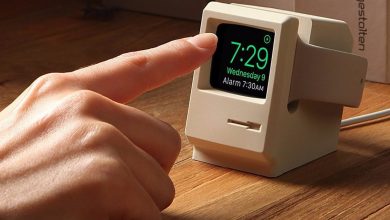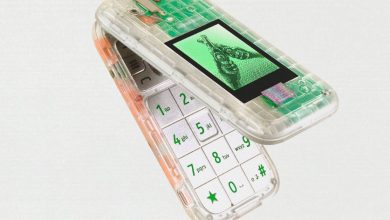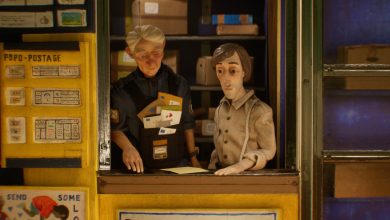How Lego builds a new Lego set

[ad_1]
Marc Corfmat was a teenager when he began to compete for Lego’s ultimate prize: the chance to design an official set. He and his brother Nick had been building custom Lego creations ever since they were kids, sometimes in California, sometimes during vacations at their grandparents’ home in La Rochelle, France. They shared their models on YouTube and posted their creations to Lego’s website, but interest from the Lego world came slowly, if it came at all.
Then, in 2020, the brothers started having some luck. The Lego Ideas program gives fans the chance to turn their designs into reality, offering both fame and a small fortune — 1 percent of net sales — to anyone who can convince 10,000 peers and The Lego Group that their set deserves to exist. After three years and 18 submissions, Marc finally cleared the 10,000-vote hurdle with a design based on Avatar: The Last Airbender. A month later, his Tintin idea was chosen as a staff pick. Another design based on The Polar Express hit 10,000 votes the next year.
And then… nothing. The Tintin votes dried up, and Lego rejected both his fan-favorite Avatar and Polar Express ideas. The company never says why it rejects an Ideas submission, only that deciding factors include everything from “playability” and “brand fit” to the difficulties in licensing another company’s IP.
“We knew it was almost impossible to get products on the shelves. You see maybe a few selected a year out of thousands of submissions — but even that slight glimmer of hope was enough to really keep us going,” says Marc, now a graduate student in mechanical engineering at the University of California, Davis.
Then, he decided to try an idea that had been noodling about his brain: a Polaroid, like one of the instant cameras his sister Mia liked using. Marc wasn’t a Polaroid devotee himself, but he’d liked the iconic look of the original 1977 Polaroid OneStep. The rainbow stripe camera had lived on his internal mood board for “quite some time,” but when he saw that a 2020 Lego Minions set had introduced the perfect size lens ring for his purposes, he decided to begin building.
Everything just clicked. “All the angles were lining up perfectly, everything was working,” he says. “It very quickly became apparent to me that I was falling in love with this thing.”
And realizing that, Marc decided to do something differently with his Lego Ideas submission in January 2022: he made it move. His model let you “load film” by opening the iconic hinged door, then “eject” a photo by turning a dial or sliding a hidden lever underneath. For the first time, he showed off motion on the web in crisp, clean animations that made the gadgety design look irresistible. It got the “staff pick” nod in under two weeks and hit 10,000 supporters in under two months. And this time, Lego finally got in touch.
Today, Lego is opening preorders for its replica of the classic rainbow stripe Polaroid OneStep SX-70 instant camera, based on Marc’s homegrown build. Lego sent one to The Verge to build and toy with, and as I’ll explain later, the $80 / €80 / £70 set is a delight. Lego also granted us multiple interviews to discuss how a Lego dream comes to life — and the challenges that come with turning a fan-made design into a ready-to-sell product.
Each project moving through the Lego Ideas program starts the same way: a Lego designer tries to replicate the original fan creation in the real world to see what works and what doesn’t. In Lego’s Billund, Denmark, headquarters, designers walk through a room called the Brick Library that’s filled with veritable supermarket aisles of parts sorted by color and shape. They can take whatever they need.
Jordan David Scott, a creative lead in the Lego Ideas program, says that creating a true Lego set isn’t a straightforward series of steps. Though Marc’s Polaroid set was well built, every set must go through stringent quality control that inevitably leads to changes. To pass, even Lego’s seasoned designers head back to the drawing board to swap out parts again and again.
In addition to production, packing, packaging, and marketing, Lego has a host of teams that work directly with designers, including a function testing department, a safety department, an engineering department, and a textile department. There’s even a dedicated “building instructions” department and a “model quality” team, each of which sits with designers and watches them build. They make sure the build process stays fun, the instructions make sense, and the model stays stable enough that there’s little chance it breaks while you build it. “It’s like the final exam of the design process,” says Lego designer James May.
While some designers think in bricks, May tells me he thinks in Lego’s internal design tool. While it’s similar to fan-facing tools like BrickLink Studio, which lets designers automatically snap together digital bricks, the internal Lego version is linked to the company’s other projects and systems. That means he can collaborate with fellow designers, see which new Lego elements are becoming available, and even budget how much pieces will cost and how many bags of parts will be created and boxed in the final set.
May is the primary builder on the Polaroid set, and that means building the Lego camera many, many times over a matter of months — some digitally, some picture-perfect physical sets, and some physical models in random colors just for stress testing. One gets baked in an oven to simulate the set sitting out in a particularly hot country; another gets poked by a robot arm to test its moving parts. May says he doesn’t keep track of “drafts” because each set is a Ship of Theseus, the same design constantly evolving as pieces are swapped out to satisfy Lego’s standards.
In the case of the Lego Polaroid, one particular challenge kept May and his colleagues swapping out parts: a request from the CEO of Polaroid himself.
When Lego came calling, Polaroid CEO Oskar Smolokowski didn’t hesitate. “I’m a (casual) Lego fan building a few sets a year so it wasn’t really a decision I had to think about!” he tells me via email. He accepted Lego’s offer almost on the spot, he says, while dodging my question about how much Lego did or didn’t pay for the license. “We didn’t feel the need to negotiate anything it felt fair and win-win to us,” he writes.
But Polaroid’s CEO did have one ask: he wanted the Lego Polaroid’s big red shutter button to do something. “I really wanted the camera to be as much of a camera as possible,” he recalls, and the CEO brought up this idea in the very first Lego / Polaroid kickoff meeting, remembers Scott.
Lego wasn’t quite ready to commit to that. “I said yeah… we can look into it?” Scott recalls. Marc’s design could already eject a photo by turning a dial, and Lego had already successfully replicated that. The dial would definitely be Plan B.
But Scott decided to challenge May, who had previously worked on the moving Lego Typewriter, to make the button work. With help from other teams that specialize in Lego’s mechanism-friendly Technic bricks, they landed on using a pair of tiny rubber bands connected to a sliding arm to eject the photo.
“It definitely didn’t work the first time,” says Scott. “I don’t know how many versions James went through.” They had to tinker with tiny details to make the mechanism work — making the contraption half a Lego plate thicker here or moving it over by one brick’s width. “A lot of it came down to nuances,” says Scott, “and all these subtleties you wouldn’t necessarily think of like which bricks are better at stopping it from firing out.”
In the end, the team attached the shutter button to an internal lever that, when pushed, raises an internal tooth, which releases a spring-loaded carriage that pushes the photo out with a satisfying chonk each time.
“Everyone came together to make this happen, and it’s so much better,” says Scott, adding that colleagues were wowed by the action (and sound) when they came by.
They also had to make sure the button worked no matter how many times someone pressed it. “A lot of the feedback we got was that the function just isn’t triggering after several hundred or several thousand times, it’s failing,” he adds. The function department even rigged up a robot to simulate pushing the shutter button tens of thousands of times — one which, I’m unreasonably pleased to say, uses Lego to test Lego:
The other half of the Polaroid button challenge: figuring out how to create a Polaroid-like “picture” worthy of being ejected from the model. Originally, they tried a flat tile like Marc did but decided it wasn’t right.
“It looked Lego, it felt Lego, but it didn’t feel like a Polaroid photo because you want it to be thin; it also meant we couldn’t print on the back because you need the tube side; it caused a lot of issues in production because of warping,” says Scott.
But Lego’s textile department came to the rescue: “We found this card, could we use this for anything?” Scott remembers them asking. It was a thin sheet of matte polypropylene plastic — a “foil” — that had only been used a couple of times before in Lego sets, most prominently in this Chinese Lunar New Year Ice Festival photobooth where minifigures can pop their heads through. It was flexible (though you can’t quite “shake it like a Polaroid picture”), and it could be easily printed on both sides.
So, Lego graphics designer Matthew Parsons, who typically works for the Lego City team, embedded himself in the company’s textile department to help figure out the foils. A photographer himself, he jumped at the chance to be part of the Polaroid project, and he designed the three Easter egg photocards that come in every box.
Lego got one of the images, choosing to depict the Lego House; Polaroid chose an iconic photo of its founder, Edwin Land; and Marc decided to thank his inspirations: the city of La Rochelle, France, where he cultivated his love of Lego and first prototyped the set, and his sister Mia, whose instant photography hobby brought him the idea. You can see some of Parsons’ sketches in our embedded gallery.
One of the last challenges was safety. Unlike actual Polaroids, the foils have rounded corners rather than sharp points. But even then, Lego’s safety department had to continually test the launcher during the monthslong project to ensure other unspecified objects couldn’t be dangerously blasted. With just a few weeks left in the schedule, they told the team they’d found one more undesirable object that someone could potentially launch out of the camera. “So that was another week of testing and building,” Scott says.
The final design ensures four Lego studs barely brush against the photo every time it ejects thanks to two sets of locking hinges that hold them at just the right angle. Inclined slopes on the edge of the film slot make the photo curve slightly upward as it ejects, too. Put it all together, press the button, and — chonk — the photo extends just far enough for you to easily grab, almost exactly an inch, instead of shooting all the way out.
If you’ve ever used an old Polaroid camera, you know that photos tend to pop out quite a bit more than an inch, accompanied by a stretchy black film to slow their roll. It’s not the only way the Lego Polaroid diverges from the real thing, of course. You won’t find the OneStep SX-70’s trademark camera strap, or the film bay’s stickers with the manufacturer’s warranty support telephone number, or an optional green button that shipped in some markets, things Marc says he asked for when they solicited his input but says understandably didn’t make the cut.
(He also says he would have preferred a smooth, tiled back instead of studs — but Lego did try that, and both Polaroid and Lego agreed they preferred the studded look. And you can swap the “OneStep” sticker for a “1000” sticker, which is how some versions looked.)
Overall, I’m wildly impressed by the result. I bought the actual 1977 camera over a year ago just because I knew this set was coming, and I sometimes mistake one for the other on my office shelf. The size, shapes, and weight are incredibly close — both weigh approximately one pound, with the Lego set’s nose (and lens) mostly just protruding a little bit more than the actual camera. The body is also a tad narrower.

There actually is a substantial nod to the missing camera strap on the back of the set, too, with openings for a strap cleverly sculpted by the gap in heart-shaped Lego plates — ones that meld into the camera’s smooth corners thanks to a semi-advanced build technique. (If you’re a big Lego fan, you’ll be familiar with the phrase “Studs Not On Top.”) The film bay eject lever, film counter, and flash hot shoe are all represented with gaps or bulges, too, and the mechanism inside the black-and-white shell is a hidden rainbow of color, using all the same hues as the rainbow stripe up front.
(It inspired me to hunt down a copy of the classic rainbow stripe for the right rail of this Verge story, in fact — Polaroid doesn’t really use the deep pink color anymore, and they had to dig it up at my request.)
The Lego team even splurged on a custom red plate with a white edge to represent Polaroid’s shutter button, plus two printed tiles for the brick-built film pack that reads “Polaroid” and “Time-Zero Supercolor SX-70 Land Film.”
I haven’t yet gotten to the single most satisfying step in the build, the one Lego saves for last: the iconic Polaroid rainbow stripe on this camera isn’t a sticker. It’s a sideways stack of 1×6 plates and 1×3 inverted hole tiles in colors that match up almost perfectly to Polaroid’s original hues, held together by thin Lego pipes. It’s great — but it made me wonder why Lego still does use some other stickers in this design.
Many Lego fans are vocal about their preference for printed parts over stickers, and there’s always annoyance when a set aimed at adults uses any stickers at all. Here, your “Polaroid Land Camera,” “OneStep” or “1000,” and the exposure dial’s white and black EV marks are all sticky labels, not printed tiles.
To my great surprise, Scott was willing to explain how Lego makes those kinds of choices.
Lego’s picker system requires each printed piece to have its own unique storage bin, so rather than continually opening more warehouses, Lego limits how many custom parts designers can introduce each year.
“We can’t make everything decorated. We can’t change every brick into every color,” Scott says. “Otherwise the portfolio would just explode in complexity, so we have teams that manage the complexity level.”
And those teams came up with one simple idea to stem the tide of complexity: “frames.”
Want a part in a different color? That costs designers a frame. A new piece? Spend some frames. Bring back an old out-of-print piece? That’s a frame, too. Every year, design leads like Scott are given a limited number of frames that they can spend on their entire portfolio for physical pieces that aren’t readily at hand. “If I have five products or 10 products coming out, I need to allocate where those frames go,” says Scott.
Doing so is “a bit of a puzzle” to figure out which sets will need lots of frames — the new Animal Crossing sets with their custom minifigures probably ate a few — and which ones can be built mostly out of preexisting parts.
Designers also try to save frames by sharing brand-new bricks with other teams, giving them a heads-up that they might come in handy for other sets, too. Some of that happens automatically: “When someone puts in an order for a particular color change, we can see it showing up in the library of digital bricks,” says Scott.
Some of it is designers intentionally pooling their resources: “If Ninjago are making something we could use, we kind of have a dialogue and say, ‘Oh, we can use this as well, that would be great, so maybe we need to get you a frame or something to share it.’”
Designers always want more frames for their sets, May says. But he explains those constraints are just part of the process. When designers don’t have as many frames as they’d like, they have to get creative — just like any other Lego fan.
For the Lego Polaroid, the team spent a frame on the red and white shutter button — which could now appear in any number of other sets — and two frames for the decorations on the film pack, which are obviously exclusive to Polaroid. Scott planned to spend frames on ejecting photos, too: internally, he and his fellow designers were excited about making a new 8×6 printed photo tile, until the foils came along.
Polaroid’s CEO remembers one more thing that didn’t make the cut: “I think the only other thing I may have mentioned was a little Edwin Land figure,” he says, referencing the founder of Polaroid. “That would’ve been awesome.” Instead, Land is on one of the three photocards that come with the set.

“Just thinking about the fact that because I submitted an idea like a year and a half ago, that now so many people in the community are going to have a Lego Polaroid set — it’s just insane,” says Marc.
I get the sense, though, that the process wasn’t entirely a dream come true. Lego mostly took his idea and ran with it. It never flew him to Denmark to meet the designers in person, something he says he would have loved, nor did it ship him prototypes during the process; he got to see it on a video call. He assured me it wasn’t a big deal — he’ll get 10 free copies after all.
Lego demands a high level of secrecy, too: he felt he couldn’t tell his own Lego-loving brother for months. Or his mom. Or his sister Mia, who may not quite know what she’s gotten into. “Like, I don’t think she understands that she’s going to be in the Lego set, you know, mass-produced,” says Marc. (He says he did ask permission to “steal her likeness,” and she was “totally cool” with it hypothetically being in Lego.)
But judging by their Lego Ideas page, Marc and his brother Nick don’t seem to have been put off one bit. In September, their “Minibrick Productions” submitted a brick-built version of the Interstellar space shuttle that took just weeks to become a Lego staff pick and has crossed 6,000 votes. A set based on Blackpink’s music video for “Lovesick Girls” hit 5,000 votes in August.
If you’re looking to follow in their footsteps with a Lego set of your own, here’s Marc’s advice: design it like a product you’d want to sell. “Showcase its play features like you’d showcase a final product.” And — though this could be survivorship bias — he says you have to keep trying, pointing to his many previous rejections as evidence.
“I think you really just have to keep going and continue with that spark of hope, that maybe one of your future projects will become an actual set.”
[ad_2]




